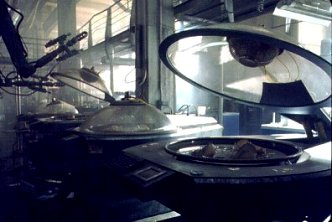
| Home Page | The Books | The Movies | The Science | Sources | Contact Me |
|---|

...in the novel...
Dr. Wu explains to Grant and Sattler that they combined dinosaur DNA embedded in fossilized mosquitoes in amber combined with frog DNA to bring dinosaurs back to life. The research scientists retrieved dinosaur DNA from biting insects that have been preserved within ancient amber. Dr. Wu explains that to prevent breeding, their dinosaurs are sterilized and engineered to be female. Malcolm is skeptical. Grant suggests that, despite the precautions that have been taken, the dinosaurs may be able to breed because Dr. Wu has substituted frog DNA in order to fill gaps in the dinosaur DNA they retrieved from amber. As things begin to fall apart in the park, Malcolm discovers that somehow, the dinosaurs are breeding despite that all of them are female. Grant explains how the dinosaurs were able to reproduce: certain species of frogs can spontaneously change their gender when they are in an environment in which all of the animals are the same sex. The dinosaurs with the frog DNA, therefore, must have inherited that trait.
...in the film...
The film stays true to the novel and creates the dinosaurs in the same process. InGen succeeded in cloning the dinosaurs from DNA strands which were preserved for millions of years inside of amber. The scientists collected fossilized mosquitoes trapped in amber. The ancient mosquitoes had sucked dinosaur blood, before they were fossilized, so the blood should still be inside the insect. Hammond's scientists extracted the fossilized dinosaur DNA from the amber-trapped mosquitoes and added frog DNA to fill in the missing chromosomes. The DNA was injected into eggs which were kept incubated until the dinosaurs hatched. The scientists try to prevent the dinosaurs from breeding, so all the reptiles are designed to be all female.
... Parthenogenesis...
The idea of females being able to reproduce without male sperm is a type of asexual reproduction called parthenogenesis. Parthenogenesis occurs naturally in certain plants, insects (fleas, ants, bees), fish, and reptiles (lizards, frogs, salamanders) in typically all-female populations. However, there is often very little diversity between the individual creatures since they share most of the same chromosomes and gene pools. This way of reproduction is being researched as a possible way to clone humans and primates. In 2004 in Tokyo, scientists created mice using parthenogenesis.

(the cloned dinosaur hatchlings in an incubator)